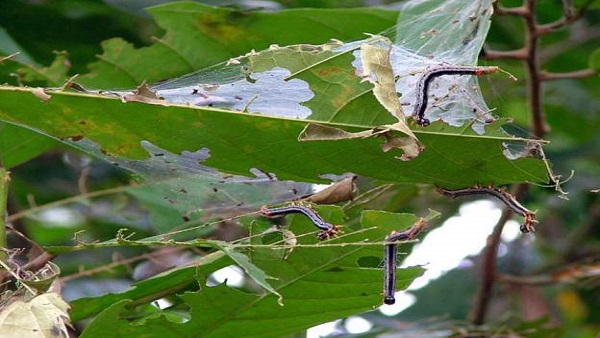The fall armyworm – which decimates fields as it marches ever forward – has spread to Angola as the caterpillar eats its way through southern Africa, U.N. officials said on Thursday.
With Angola the latest country affected, only Lesotho and island nations in the region have escaped the pest, which devours crops in its path, the officials said. Its spread has undermined hopes for a better harvest this year, they added, with swathes of southern, eastern and western Africa infested.
“Now even Angola has confirmed (an outbreak),” said Joyce Mulila Mitti, a crop production and protection officer at the Food and Agriculture Organization (FAO) of the United Nations.
Mamoudou Diallo, the FAO’s representative in Angola, said the pest has been detected by a joint government and FAO mission in the south of the country.
He did not reveal the extent of the infestation and told the Thomson Reuters Foundation by phone that a report was due in the coming days.
Native to North and South America, the caterpillar was first detected in Western Africa in 2016 and has since spread across sub-Saharan Africa, ravaging maize and other cereal crops.
In southern Africa, the invasion follows an El Nino-induced drought that scorched the region last year, leaving millions in need of food aid.
“The rainfall was better this season so we all expected a very good harvest. The outbreak of fall armyworm undermines what we expected would be a different story,” Mulila Mitti said by phone from Nairobi, where the FAO is meeting to discuss the infestation.
Some countries with confirmed outbreaks have faced bans on exporting their agricultural products.
Over the past two months, the armyworm reached Kenya and Ethiopia, in eastern Africa, threatening to further affect food security in a region already struggling with widespread drought and hunger.
Small farmers often lack money or expertise to use pesticides effectively, said Mulila Mitti.
Experts in Nairobi said spotting the pest early – when it is still a larva – was key to prevention.
“We need to put in place effective surveillance systems and respond in time to confirmed outbreaks,” Gabriel Rugalema, FAO country representative in Kenya, said in a statement.
The caterpillar can fly long distances, leading the United Nations to fear it could reach Asia and the Mediterranean in the next few years.
Source: Thomson Reuters Foundation



